Please Sign in or Register now to manage lightbox and cart
Lightboxes - How to use them
A Lightbox is a virtual table where you can collect and view images of interest.
Collect the files you like from any search results page or file close-up page by clicking the 'Add to your Lightbox' icon.
To open and view your selection, click the Lightbox link on the top navigation menu. You can have more than one lightbox if you're working on different projects.
You can email a Lightbox to friends and colleagues for review and discussion before purchase; they will receive an email with a link to the Lightbox that you created.
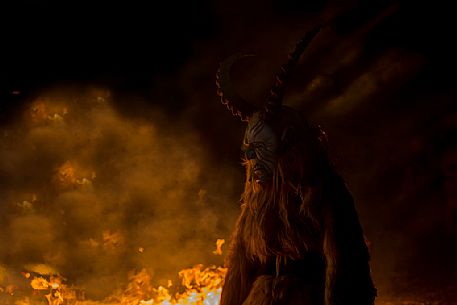
photographer: Maria Fancello
Krampus are horned, antropomorphic folklore figures companions of Saint Nicholas. You can meet them on the 5th or 6th December in regions including Austria, Bavaria, Croatia, Hungary, Slovenia and Northern Italy. This photo was taken in Tarvisio, Friuli Venezia Giulia, Italy
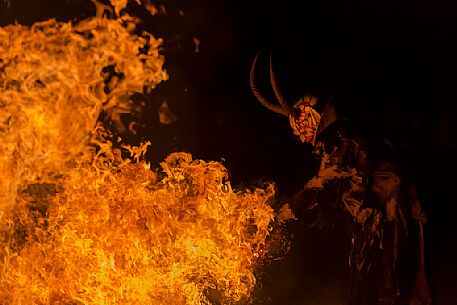
photographer: Maria Fancello
Krampus are horned, antropomorphic folklore figures companions of Saint Nicholas. You can meet them on the 5th or 6th December in regions including Austria, Bavaria, Croatia, Hungary, Slovenia and Northern Italy. This photo was taken in Tarvisio, Friuli Venezia Giulia, Italy
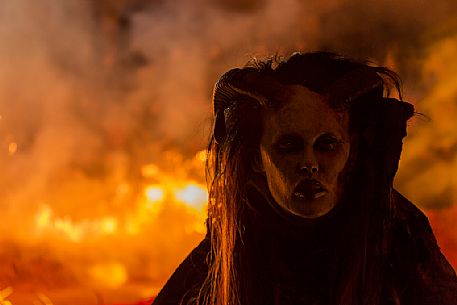
photographer: Maria Fancello
Krampus are horned, antropomorphic folklore figures companions of Saint Nicholas. You can meet them on the 5th or 6th December in regions including Austria, Bavaria, Croatia, Hungary, Slovenia and Northern Italy. This photo was taken in Tarvisio, Friuli Venezia Giulia, Italy
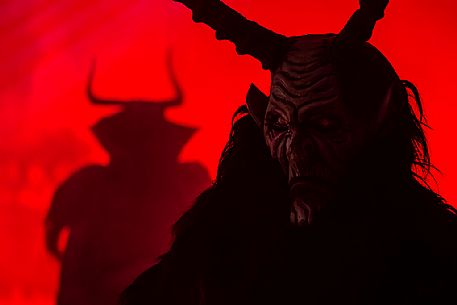
photographer: Maria Fancello
Krampus are horned, antropomorphic folklore figures companions of Saint Nicholas. You can meet them on the 5th or 6th December in regions including Austria, Bavaria, Croatia, Hungary, Slovenia and Northern Italy. This photo was taken in Tarvisio, Friuli Venezia Giulia, Italy
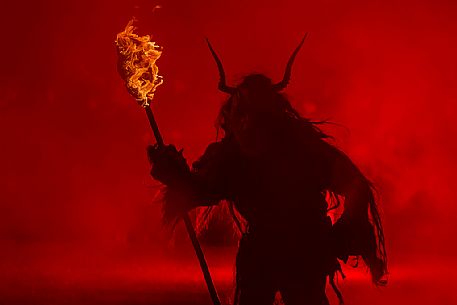
photographer: Maria Fancello
Krampus are horned, antropomorphic folklore figures companions of Saint Nicholas. You can meet them on the 5th or 6th December in regions including Austria, Bavaria, Croatia, Hungary, Slovenia and Northern Italy. This photo was taken in Tarvisio, Friuli Venezia Giulia, Italy

photographer: Maria Fancello
Krampus are horned, antropomorphic folklore figures companions of Saint Nicholas. You can meet them on the 5th or 6th December in regions including Austria, Bavaria, Croatia, Hungary, Slovenia and Northern Italy. This photo was taken in Tarvisio, Friuli Venezia Giulia, Italy
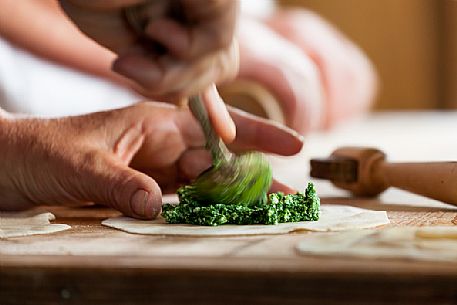
photographer: Luciano Gaudenzio
Preparation of traditional turtres (pancakes stuffed with cheese and spinach) at the Segra da Paur festival, La Val, Val Badia
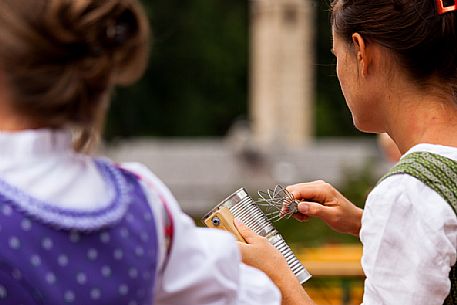
photographer: Luciano Gaudenzio
Traditional ladin clothing at Segra da Paur local festival, La Val, Val Badia, dolomites, italy
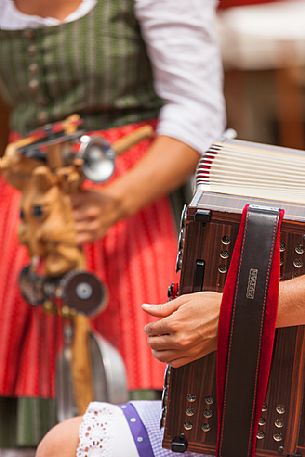
photographer: Luciano Gaudenzio
Traditional ladin clothing at Segra da Paur local festival, La Val, Val Badia, dolomites, italy

photographer: Stefano Caccia
It's saturday and the dutch youth make a party along the Amsterdam canals.Just for fun.Dutch lifestyle, Holland

photographer: Stefano Caccia
It's saturday and the dutch youth make a party along the Amsterdam canals.Just for fun.Dutch lifestyle. Holland
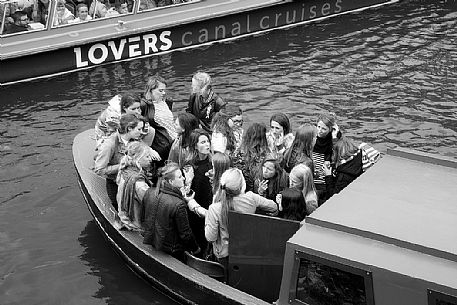
photographer: Stefano Caccia
It's saturday and the dutch youth make a party along the Amsterdam canals.Just for fun.Dutch lifestyle. Holland
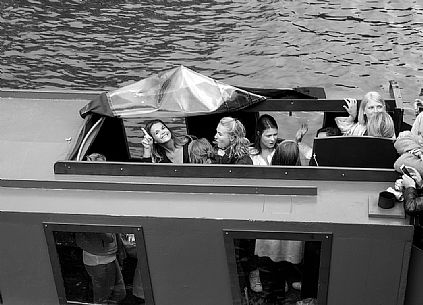
photographer: Stefano Caccia
It's saturday and the dutch youth make a party along the Amsterdam canals.Just for fun.Dutch lifestyle. Holland
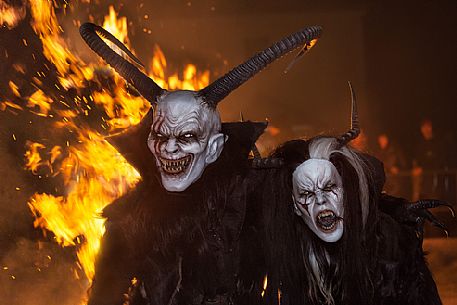
photographer: Anne Maenurm
Bad Santa, meet Krampus: a half-goat, half-demon, horrific beast who literally beats people into being nice and not naughty. Krampus, whose name is derived from the German word krampen, meaning claw, is said to be the son of Hel in Norse mythology. The legendary beast also shares characteristics with other scary, demonic creatures in Greek mythology, including satyrs and fauns, Tarvisio, Italy
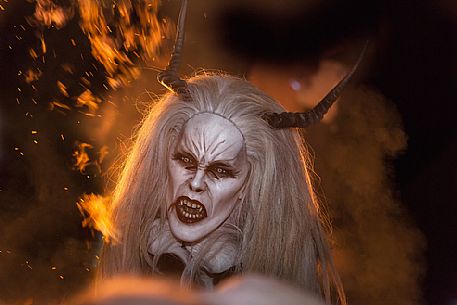
photographer: Anne Maenurm
Bad Santa, meet Krampus: a half-goat, half-demon, horrific beast who literally beats people into being nice and not naughty. Krampus, whose name is derived from the German word krampen, meaning claw, is said to be the son of Hel in Norse mythology. The legendary beast also shares characteristics with other scary, demonic creatures in Greek mythology, including satyrs and fauns, Tarvisio, Italy
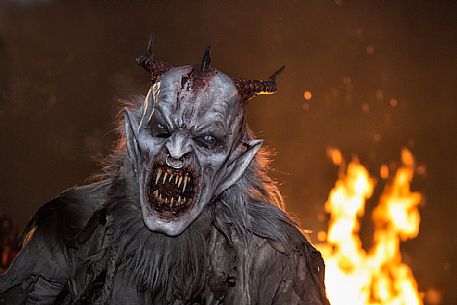
photographer: Anne Maenurm
Bad Santa, meet Krampus: a half-goat, half-demon, horrific beast who literally beats people into being nice and not naughty. Krampus, whose name is derived from the German word krampen, meaning claw, is said to be the son of Hel in Norse mythology. The legendary beast also shares characteristics with other scary, demonic creatures in Greek mythology, including satyrs and fauns, Tarvisio, Italy
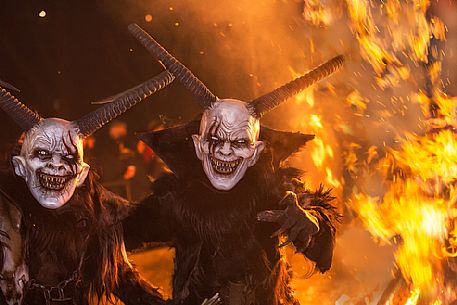
photographer: Anne Maenurm
Bad Santa, meet Krampus: a half-goat, half-demon, horrific beast who literally beats people into being nice and not naughty. Krampus, whose name is derived from the German word krampen, meaning claw, is said to be the son of Hel in Norse mythology. The legendary beast also shares characteristics with other scary, demonic creatures in Greek mythology, including satyrs and fauns, Tarvisio, Italy
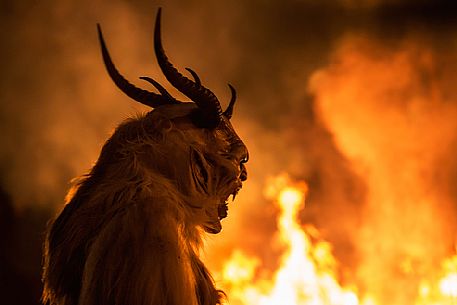
photographer: Anne Maenurm
Bad Santa, meet Krampus: a half-goat, half-demon, horrific beast who literally beats people into being nice and not naughty. Krampus, whose name is derived from the German word krampen, meaning claw, is said to be the son of Hel in Norse mythology. The legendary beast also shares characteristics with other scary, demonic creatures in Greek mythology, including satyrs and fauns, Tarvisio, Italy

photographer: Anne Maenurm
Bad Santa, meet Krampus: a half-goat, half-demon, horrific beast who literally beats people into being nice and not naughty. Krampus, whose name is derived from the German word krampen, meaning claw, is said to be the son of Hel in Norse mythology. The legendary beast also shares characteristics with other scary, demonic creatures in Greek mythology, including satyrs and fauns, Tarvisio, Italy
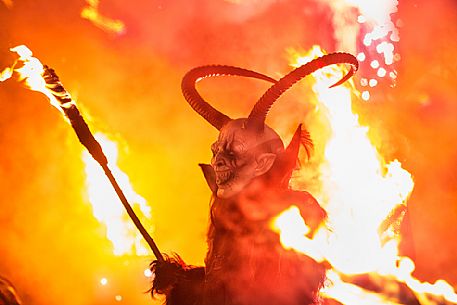
photographer: Anne Maenurm
Bad Santa, meet Krampus: a half-goat, half-demon, horrific beast who literally beats people into being nice and not naughty. Krampus, whose name is derived from the German word krampen, meaning claw, is said to be the son of Hel in Norse mythology. The legendary beast also shares characteristics with other scary, demonic creatures in Greek mythology, including satyrs and fauns, Tarvisio, Italy

photographer: Anne Maenurm
Bad Santa, meet Krampus: a half-goat, half-demon, horrific beast who literally beats people into being nice and not naughty. Krampus, whose name is derived from the German word krampen, meaning claw, is said to be the son of Hel in Norse mythology. The legendary beast also shares characteristics with other scary, demonic creatures in Greek mythology, including satyrs and fauns, Tarvisio, Italy
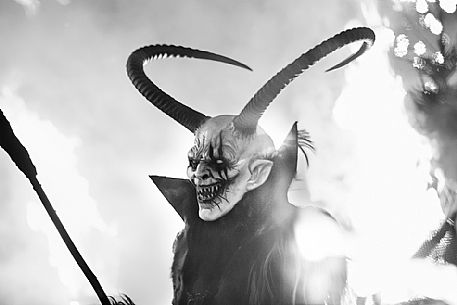
photographer: Anne Maenurm
Bad Santa, meet Krampus: a half-goat, half-demon, horrific beast who literally beats people into being nice and not naughty. Krampus, whose name is derived from the German word krampen, meaning claw, is said to be the son of Hel in Norse mythology. The legendary beast also shares characteristics with other scary, demonic creatures in Greek mythology, including satyrs and fauns, Tarvisio, Italy

photographer: Anne Maenurm
Bad Santa, meet Krampus: a half-goat, half-demon, horrific beast who literally beats people into being nice and not naughty. Krampus, whose name is derived from the German word krampen, meaning claw, is said to be the son of Hel in Norse mythology. The legendary beast also shares characteristics with other scary, demonic creatures in Greek mythology, including satyrs and fauns, Tarvisio, Italy

photographer: Anne Maenurm
Bad Santa, meet Krampus: a half-goat, half-demon, horrific beast who literally beats people into being nice and not naughty. Krampus, whose name is derived from the German word krampen, meaning claw, is said to be the son of Hel in Norse mythology. The legendary beast also shares characteristics with other scary, demonic creatures in Greek mythology, including satyrs and fauns, Tarvisio, Italy
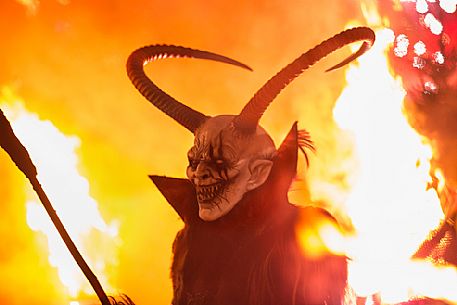
photographer: Anne Maenurm
Bad Santa, meet Krampus: a half-goat, half-demon, horrific beast who literally beats people into being nice and not naughty. Krampus, whose name is derived from the German word krampen, meaning claw, is said to be the son of Hel in Norse mythology. The legendary beast also shares characteristics with other scary, demonic creatures in Greek mythology, including satyrs and fauns,Tarvisio, Italy

photographer: Luciano Gaudenzio
The grappas of Rinfreddo hut, Comelico, dolomites, Italy
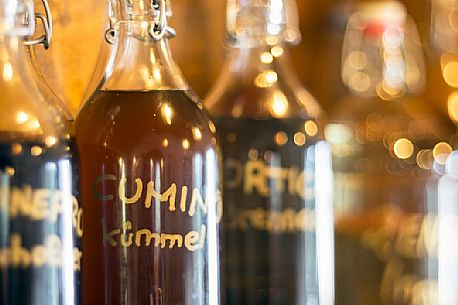
photographer: Luciano Gaudenzio
The grappas of Rinfreddo hut, Comelico, dolomites, Italy

photographer: Luciano Gaudenzio
Roll of spinach and ricotta cheese with tomato sauce. Typical plate served in Malga Rinfreddo, Comelico, Dolomites, Italy
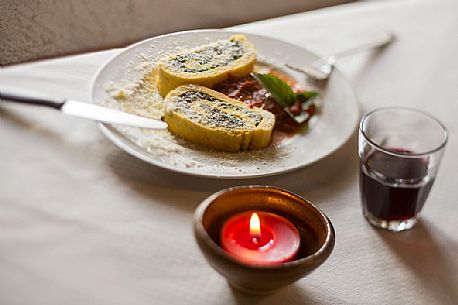
photographer: Luciano Gaudenzio
Roll of spinach and ricotta cheese with tomato sauce. Typical plate served in Malga Rinfreddo, Comelico, dolomites, Italy

photographer: Luciano Gaudenzio
Some moments of Sauris Carnival with one the most important masks: the Rölar. Sauris di Sotto.
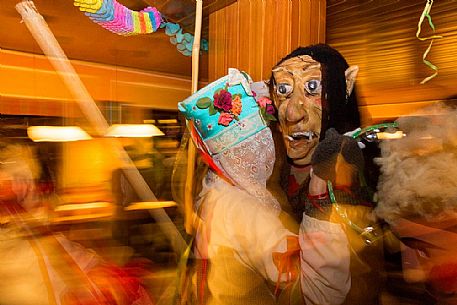
photographer: Luciano Gaudenzio
Some moments of Sauris Carnival with one the most important masks: the Rölar. Sauris di Sotto.

photographer: Luciano Gaudenzio
Some moments of Sauris Carnival with the most important masks: the Rölar and Kheirar. Sauris di Sotto.

photographer: Luciano Gaudenzio
Some moments of Sauris Carnival with the most important masks: the Rölar and Kheirar. Sauris di Sotto.
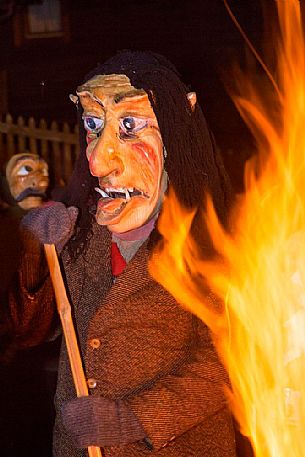
photographer: Luciano Gaudenzio
The Kheirar (tradional mask) during the carnival celebration of Sauris
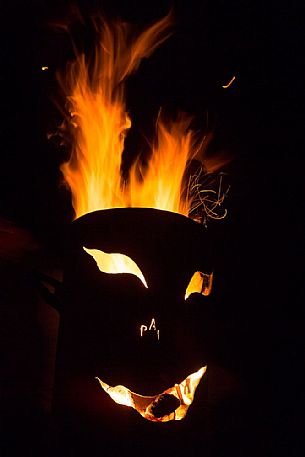
photographer: Luciano Gaudenzio
Mask on fire the traditional carnival celebration of Sauris

photographer: Luciano Gaudenzio
Bonfire during the traditional carnival celebration, Sauris
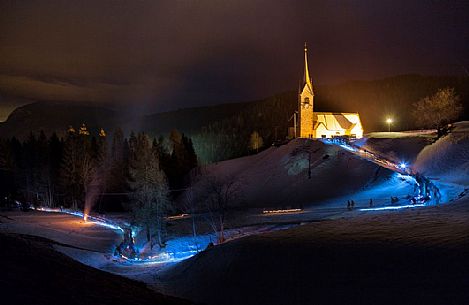
photographer: Luciano Gaudenzio
Night procession during the carnival of Sauris, San Lorenzo church, Sauris
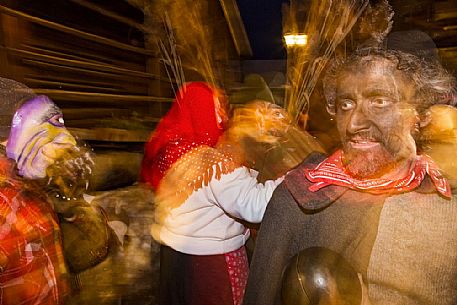
photographer: Luciano Gaudenzio
Some moments of Sauris Carnival with one the most important masks: the Rölar. Sauris di Sotto.


